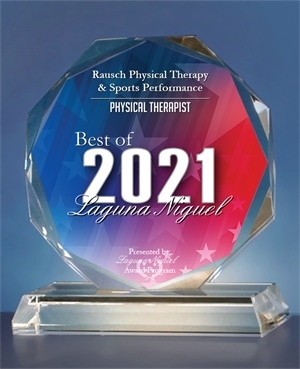How to Avoid and Manage Arthritis in Your Knee
June 30, 2016 7:42 pm / Category: Physical Therapy
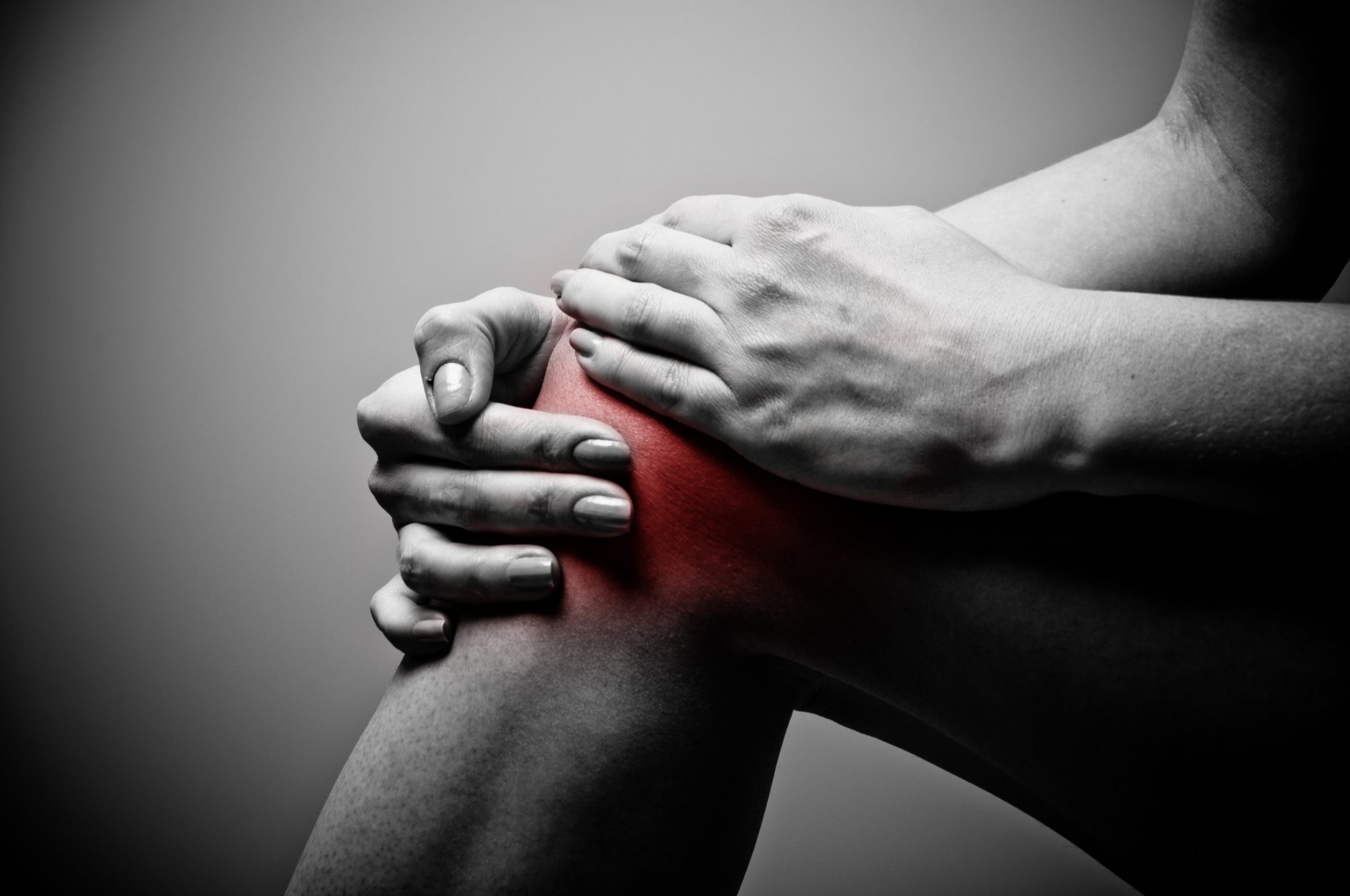

BY SEAN SWOPES, DPT, RAUSCH PHYSICAL THERAPY
The term arthritis, or more specifically Osteoarthritis (OA), refers to degeneration of the articular cartilage of the knee. While OA is most commonly associated with knee pain in 40-60 year olds, it is not something specific to old age. In fact, most people—regardless of their age—have some form of OA, but it’s the severity that usually determines the onset of pain.
What causes arthritis in the knee?
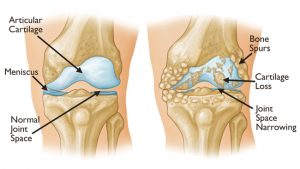
Photo Credit: AAOS OrthoInfo
Most of the body is comprised of cartilaginous tissue, and having arthritis means that that cartilage is breaking down. When you have OA, the “hyaline cartilage” at the end of the long bones in your leg (Tibia and Femur) is breaking down. Healthy hyaline cartilage provides cushion to long bones and provides a smooth surface for movement to occur; in appearance, this tissue is very white and smooth. In contrast, degenerative hyaline cartilage appears red and irritated.
The breakdown of this articular cartilage leads to excessive wear and tear on the joint, causing inflammation, which ultimately results in pain.
OA can also form through injury to the intra-articular (joint) surface of the knee. Injury to the (tibiofemoral) joint can lead to bleeding within the joint, which leads to further degeneration of the knee.
How can I avoid arthritis in the knee?
While many people may think arthritis is just a part of growing old, there are steps you can take to help minimize the risk of arthritis effecting your knee or your quality of life.
Improve strength in your core, not just your legs
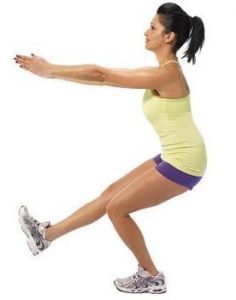 Since humans walk upright, our pelvic and core stability can determine the effectiveness of those knee stabilizing muscles. Hip strengthening exercises can improve the stability of the legs and decrease abnormal stress to the knee joint.
Since humans walk upright, our pelvic and core stability can determine the effectiveness of those knee stabilizing muscles. Hip strengthening exercises can improve the stability of the legs and decrease abnormal stress to the knee joint.
Activity modification
If you knee is painful and inflamed, switch to lower impact activities. For example, if running is irritating your knee, go for a swim or bike ride instead; these two activities still allow for good cardiovascular training but decreases stress to the knee.
Strengthen your legs
The body adapts to the daily stress we place upon it. While we can often tolerate our day-to-day routine without over-stressing our knee, we are all one-weekend-trip-at-Disneyland away from causing damage to the knee joint. As simple as it sounds, strengthening the muscle surrounding the knee can help to reduce the risk for arthritis. The goal of strengthening is to place the load into the muscle, which takes the stress away from the knee joint.
Four ways to improve arthritis-related pain and function
While unfortunately this condition is degenerative and non-reversible, those who are diagnosed with OA can still address limitations to improve knee function and manage pain. Four ways to improve function with OA-related related pain include:
1. Adequate range of motion (ROM)
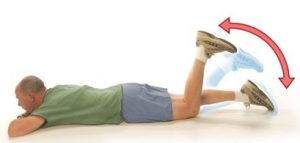
Knee Flexion Stretch. Photo credit: WebMD
- Prone knee flexion stretch
- Hand up stretch (hip flexor stretch)
- Hamstring/Calf Stretch
2. Sufficient strength
Strength is not just for lifting heavy weights; strength and stability assures optimal control of movement during activities that may cause unnecessary stress to the joint. Try these exercises to help strengthen your lower body and take that stress off your knee joints!
- Single leg squats
- Side stepping with Theraband around knee
- Single leg balance activities (balance on BOSU / dynamic disc )
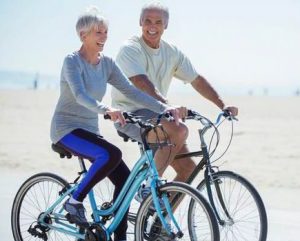 3. Activity modification
3. Activity modification
While you may want to run marathons for the rest of our life, knowing when your joints have had enough is important. Think of running as a series of mini-single leg squats; if you can’t tolerate hopping on one leg, your body is telling you to calm the inflammation and address the issue. Swimming and cycling are two ways that produce minimal force through the knee and offer great cardiovascular benefits.
4. Remember: Motion is lotion
While decreasing stress to the knee joint is necessary, too much rest can be detrimental. While inflammation is a natural part of healing for every injury, it shouldn’t take longer than 3-5 days. If you refrain from all motion/activity, the body will not produce synovial fluid, which is the bodies natural lubricant. Instead, perform easy functional movements, such as body weight squats, or ride the stationary bike for 5-10 with minimal resistance.
 Sean Swopes graduated from CSU Fullerton with a bachelor of science in kinesiology. He went on to receive his doctorate in physical therapy in 2015 from University of St. Augustine, and began his career here at Rausch Physical Therapy and Sports Performance. Sean is also a certified Strength and Conditioning Specialist. As a physical therapist, Sean’s goal is to help his patients understand their musculoskeletal impairments and work together to improve them.
Sean Swopes graduated from CSU Fullerton with a bachelor of science in kinesiology. He went on to receive his doctorate in physical therapy in 2015 from University of St. Augustine, and began his career here at Rausch Physical Therapy and Sports Performance. Sean is also a certified Strength and Conditioning Specialist. As a physical therapist, Sean’s goal is to help his patients understand their musculoskeletal impairments and work together to improve them.
Click to learn more about Sean and our other physical therapists »


